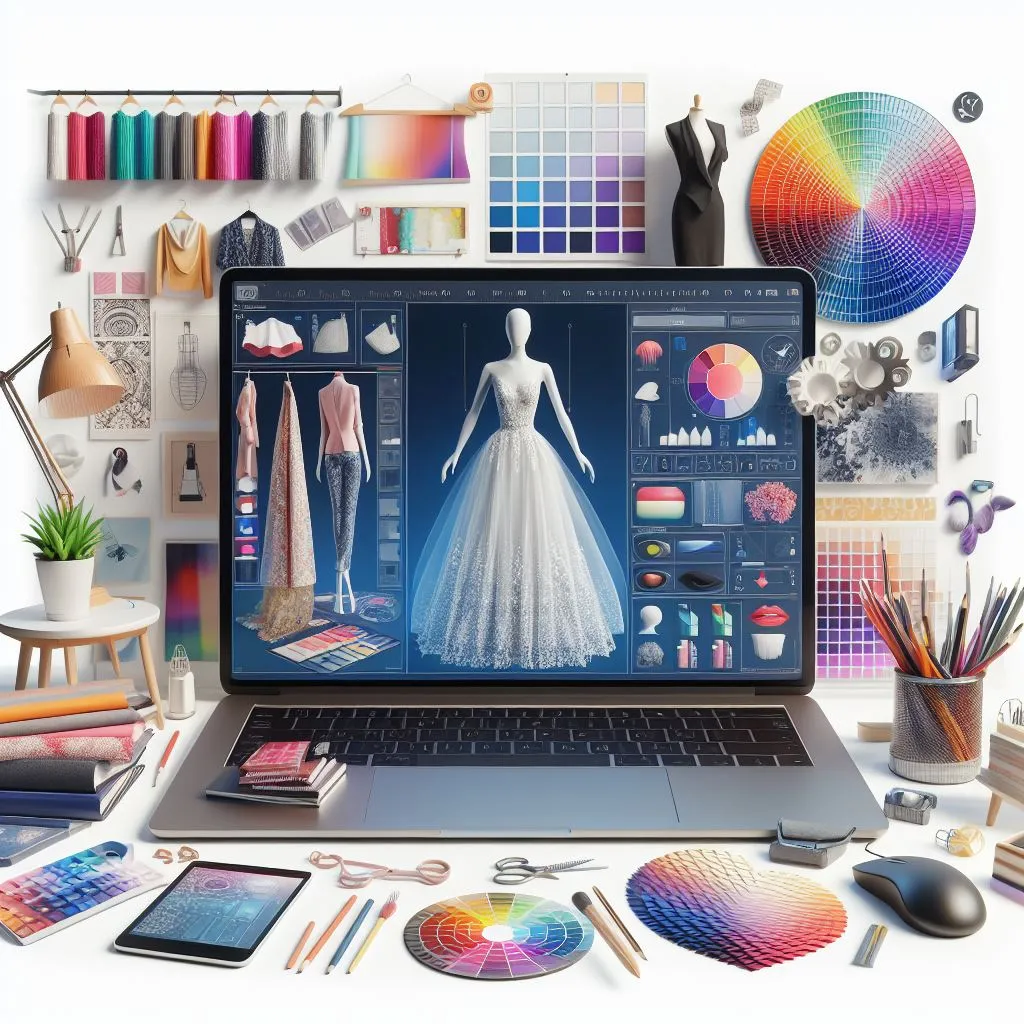When we talk about premium laptops, Apple MacBooks inevitably come to mind. Known for their sleek designs, powerful performances, and intuitive software, MacBooks have carved out a niche for themselves in the competitive world of computing. But what exactly sets them apart? Let’s delve into the unique features, benefits, and considerations that make Apple laptops so popular among consumers.

Table of Contents
- Hardware Design and Build Quality
- Operating System and Software Ecosystem
- Performance and Power Efficiency
- Display Technology and Retina Displays
- Trackpad and Keyboard Innovations
- Connectivity and Ports
- Security and Privacy Features
- Integration with Apple Ecosystem
- Customer Support and Warranty Services
- User Experience and User Satisfaction
1. Hardware Design and Build Quality
Apple has always been known for its attention to detail, particularly when it comes to designing electronic products. With Apple MacBooks, they take things up a notch by employing superior materials and manufacturing techniques. Aluminum unibody construction ensures durability while maintaining elegance. Additionally, meticulous craftsmanship results in near-flawless finishes, giving MacBooks a luxurious feel.
Different Apple MacBook models cater to varying needs, showcasing diverse design philosophies. For instance, the MacBook Air boasts incredible thinness and lightweight characteristics, making it perfect for those constantly on the move. On the other hand, the Apple MacBook Pro focuses on power and versatility, offering multiple configuration options tailored to professional usage scenarios.
2. Operating System and Software Ecosystem
One significant advantage of owning a Macbook lies within its exclusive operating system – macOS. Its UNIX-based foundation enables robust functionality and stability, setting itself apart from many competitors. Furthermore, macOS integrates seamlessly with other Apple devices and services, enhancing productivity through continuity features like Handoff and Universal Clipboard.
iCloud further strengthens this connection, allowing users to sync data across all compatible devices effortlessly. Meanwhile, apps designed specifically for macOS offer enhanced compatibility and optimizations, contributing to a smooth user experience overall.
3. Performance and Power Efficiency
Apple MacBooks pack quite a punch regarding raw processing power. Users can choose between several processors depending on their requirements, ranging from efficient dual-core chips to beastly octa-core ones. Coupled with generous RAM allocations and blazingly fast solid-state drives, even demanding tasks become manageable.
However, beyond sheer horsepower, macOS demonstrates remarkable prowess in managing resources efficiently. Advanced energy saving technologies help prolong battery life, enabling users to work longer without plugging in. Moreover, intelligent background processes ensure optimal system responsiveness during heavy loads.
4. Display Technology and Retina Displays
Retina displays represent one of Apple’s most iconic contributions to consumer electronics. These screens exhibit exceptionally sharp text rendering, vibrant colors, and impressive contrast ratios thanks to high pixel densities and advanced panel technologies.
Features like True Tone adjust screen temperature based on ambient lighting conditions, reducing eye strain and fatigue. Some models even feature ProMotion technology, doubling refresh rates for smoother scrolling and animation effects.
5. Trackpad and Keyboard Innovations
Input methods form another crucial aspect of any computer interaction. Apple excels here too, introducing innovative concepts like the Force Touch trackpad. Equipped with haptic feedback motors, these input surfaces provide tactile sensations simulating physical button clicks. Gesture recognition algorithms enable intuitive multi-touch interactions, simplifying everyday operations.
Keyboards have seen their fair share of innovation as well, albeit controversially. While praised for being quiet and precise, the butterfly switch mechanism faced criticism due to its susceptibility to debris accumulation causing sticky keys. Recent revisions seem to address these concerns satisfactorily, though time will tell whether they stand the test of real-world usage.
6. Connectivity and Ports
Modern MacBooks primarily rely on USB Type-C connections for peripherals and charging purposes. Though adaptable via dongles, this shift initially sparked controversy amongst users accustomed to legacy ports. However, widespread adoption of USB-C eventually softened resistance, especially considering its potential bandwidth and charging efficiencies.
Aside from wired connections, Wi-Fi and Bluetooth remain integral components of modern computing. Fortunately, Apple consistently prioritizes incorporating cutting-edge networking standards, ensuring stable and swift wireless communication channels.
7. Security and Privacy Features
Security remains paramount in today’s interconnected digital landscape. MacBooks incorporate numerous safeguards against threats, starting with encrypted file systems protecting stored information. Secure Boot prevents unauthorized firmware modifications, adding another layer of defense.
Biometric authentication mechanisms, such as Touch ID, allow secure unlocking and payment authorization without typing passwords repeatedly. Encryption tools like FileVault protect sensitive files, whereas integrated VPN clients maintain online anonymity.
8. Integration with Apple Ecosystem
Seamless device synchronization forms a cornerstone of Apple’s product strategy. Cross-platform continuity facilitated by services like iCloud Drive, AirDrop, and Handoff significantly enhance convenience. Compatible accessories, such as AirPods, Magic Mouse, or external monitors, extend functionalities further, fostering a cohesive environment across disparate gadgetry categories.
Sidecar, a relatively new addition, transforms iPads into secondary displays for Apple MacBooks, expanding workspace flexibility. Similarly, Universal Control lets users control multiple nearby Macs simultaneously using a single mouse and keyboard setup, blurring boundaries between separate machines.
9. Customer Support and Warranty Services
Exemplary after-sales care distinguishes Apple from peers, evident in their comprehensive warranties and reliable tech support. Authorized repair centers guarantee authentic parts usage, preserving longevity and resale value.
Additionally, extended plans under AppleCare+ cover accidental damage incidents alongside standard hardware defect claims, providing peace of mind for anxious customers. Online resources, tutorial videos, and community forums supplement official assistance efforts, empowering self-help endeavors.
10. User Experience and User Satisfaction
Despite occasional criticisms, satisfied Macbook owners often cite ease-of-use, dependability, and style as primary reasons behind brand loyalty. High retention rates suggest positive experiences shared organically amongst users, reinforcing reputations built over decades.
Negative comments typically revolve around steep pricing, limited upgradeability, or certain controversial design decisions. Nevertheless, constructive feedback fuels continuous improvement cycles, resulting in iteratively refined offerings year upon year.
Conclusion
In summary, Apple MacBooks distinguish themselves through exceptional hardware engineering, sophisticated operating systems, top-notch performance metrics, stunning display panels, innovative input methods, streamlined connectivity options, robust security measures, extensive cross-device integration, dedicated customer support, and overwhelmingly favorable user reception. Despite minor shortcomings, these attributes collectively position MacBooks as highly desirable choices amidst fierce competition.
FAQs
- Why are MacBooks considered pricey?
MacBooks embody premium quality, featuring high-end materials, intricate craftsmanship, and cutting-edge technologies, justifying higher retail prices. - Can I run Windows on my Macbook?
Yes! Virtual machine software allows running Microsoft’s OS concurrently with macOS, broadening application compatibility range. - How does macOS compare to Windows 10 regarding usability?
Subjective opinions vary; however, many prefer macOS’ clean interface, fluid animations, and consistent navigation patterns. - Are there alternatives to Apple’s proprietary chargers?
Third-party USB-C PD compliant chargers function equally well, provided they meet specified voltage/ampere requirements. - What happens if I drop my Macbook accidentally?
Depending on impact force and location, internal components might suffer damage, necessitating repairs covered under applicable warranties.


